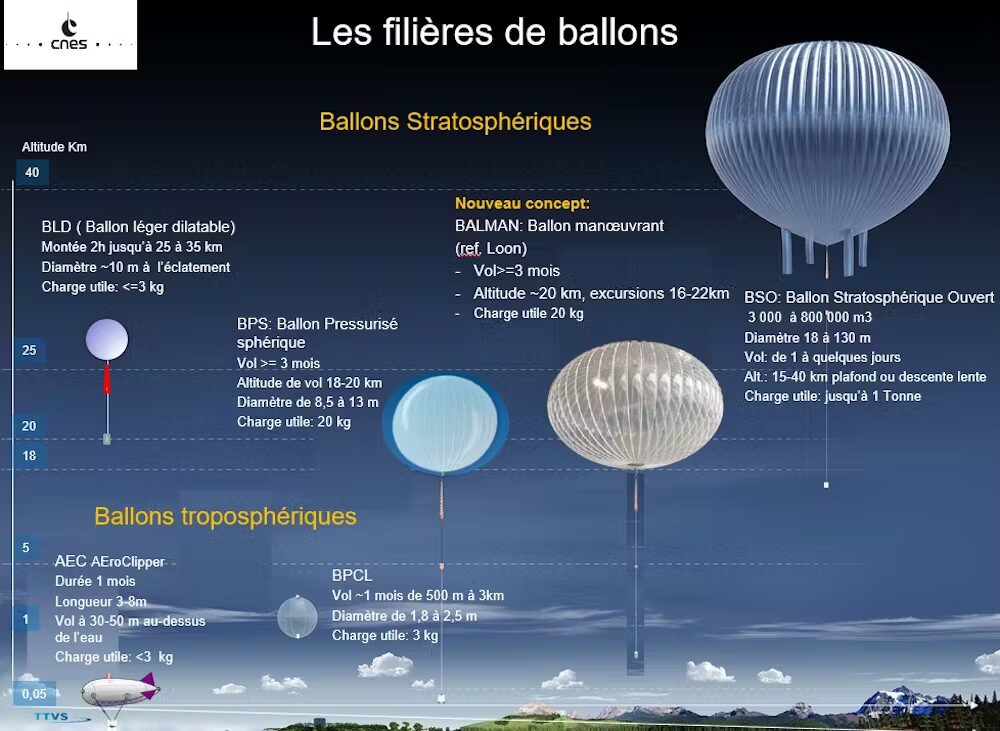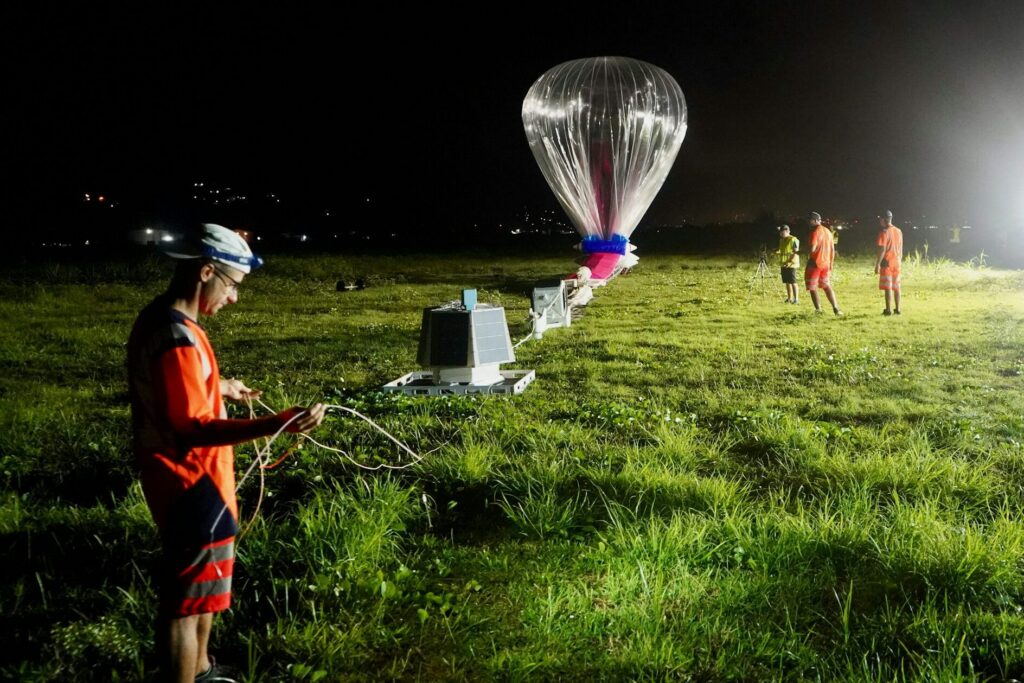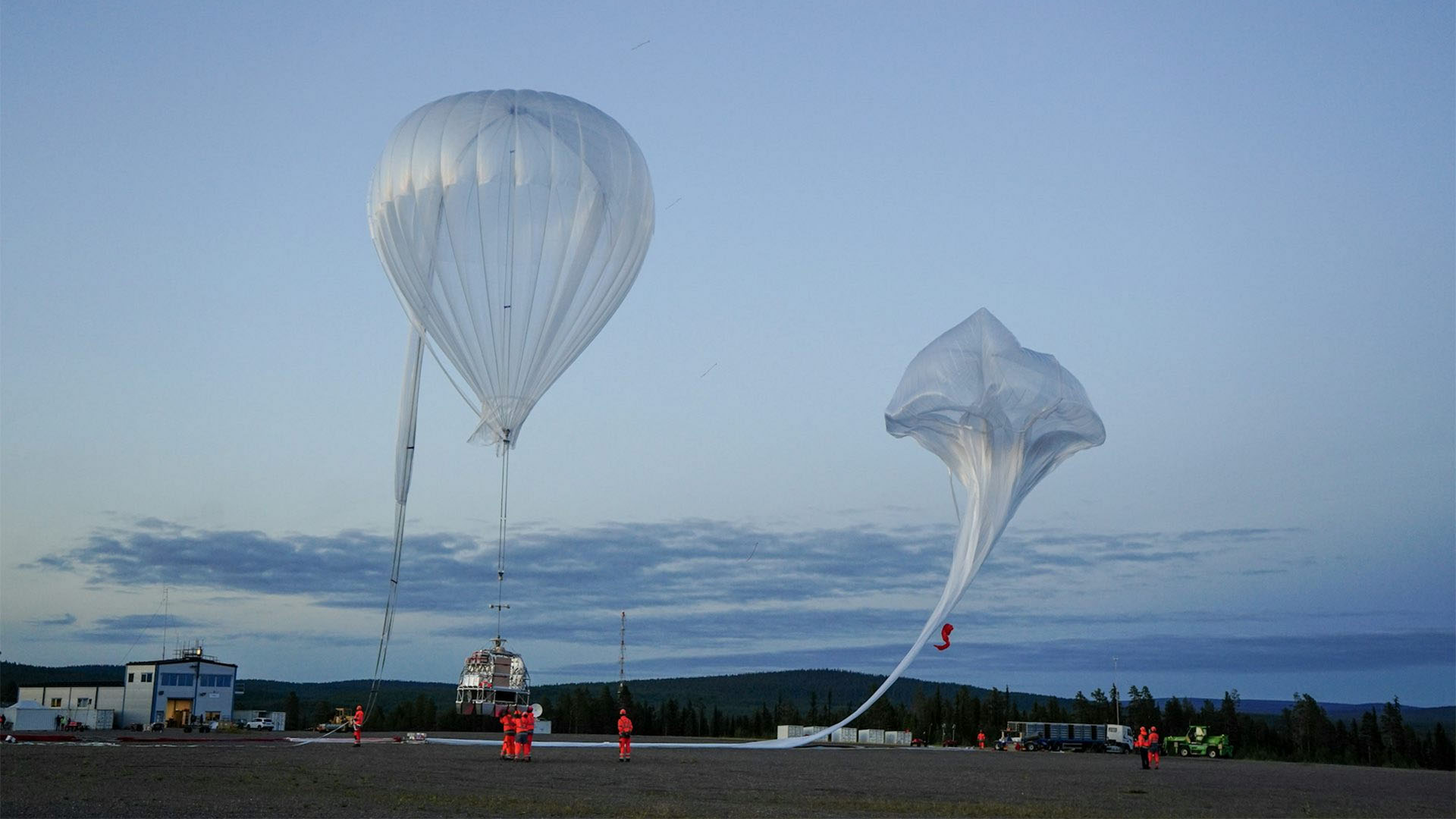At a few dozen kilometers altitude, the atmosphere sometimes hosts stratospheric balloons. True laboratories, they are essential lookouts for scientists studying climate change, notes this article from The Conversation.
For sixty years, the National Center for Space Studies (CNES) has designed, developed and operated balloons for science and technology. Yet this month of June 2024, our team of balloonists will achieve a first. A transatlantic flight, launched from northern Sweden to Kiruna, carrying a pod of scientific instruments weighing more than 800 kg, which will be recovered a short week later in the Canadian Arctic. This flight will make it possible to measure greenhouse gases on a large geographical scale. And in the fall of 2025, a flotilla of twenty stratospheric pressurized balloons, flying between 18 and 20 km altitude, will leave the Seychelles for a journey of several months to equatorial latitudes in order to study the composition and transport of masses of air in relation to climate change.
Advertisement
The balloon activity started in France in 1961, at the CNRS Aeronomy Department, and CNES took charge of it in 1964. Since then, we have operated more than 4,000 flights. Capable of remaining sustainably in the stratosphere at an altitude of up to 40 km, the balloon remains a unique vehicle for collecting in situ data on winds, greenhouse gases, aerosols, radiation, and for observing the Universe with telescopes carried above the dense layers of the atmosphere.
Thus, in collaboration with CNRS laboratories and countries hosting release sites, we organize regular campaigns abroad and in France from the Aire sur l'Adour operations center in the Landes department.
CNES is now the prime contractor for the complete system, and relies on equipment manufacturers and subcontractors of various backgrounds and sizes. The manufacturer of the envelopes is unique in Europe, it is HEMERIA Airship, which took over the factory created by Zodiac, near Toulouse.
Over the last 5 years, the stratosphere has inspired the “New Space”: these initiatives from the private sector, from industry, and in particular from start-ups, for new applications and services from space and the stratosphere, Thales Alenia Space is working to an airship, the StratobusAirbus has developed the Zephyr drone and soon the maneuvering balloon, with Hemeria and CNES. Start-ups like Zephalto want to offer stratospheric balloon tourism. Our team provides these French players with our technical expertise and experience. In Europe, Sweden, in Kiruna, operates flights of stratospheric balloons, purchased in France or the United States, the world leader in the field. The other European countries, players in space, Germany, Italy, United Kingdom, but also Belgium, Netherlands, Spain, Poland, develop instruments which they fly with CNES or the Swedes.
Advertisement
The advantages of stratospheric balloons
As innovation platforms, simple and ecological, balloons have undeniable advantages. They enable the development of complete projects in the short term, compatible with training cycles for engineers and researchers.
They provide subjects for international cooperation at reduced cost, and instrument demonstrators for satellites, quickly tested in operational situations. All the equipment that lands under parachute is recovered after the flight and can be reused. The implementation operations are relatively simple, compatible with poorly equipped release sites.
Finally, the mechanical constraints are less strict than for a satellite subject to the shocks and vibrations of the launcher.
To meet the various missions requested, we offer an optimized range of vehicles, whose envelope materials, dimensions and different on-board and ground systems are adapted to the required performance.

Different balloons depending on the missions
The open stratospheric balloon (OSB) can reach almost a million m3 (eight rugby fields on the surface), made of transparent polyethylene 15 to 25 µm thick, can carry nearly 2 tonnes and fly for a few days up to 40 km altitude. It can carry out controlled descents thanks to a valve to evacuate helium, and a reserve of ballast of steel balls (see Figure 3 the synoptic of the BSO)
Annual campaigns in Sweden, Canada, Australia and soon Brazil, use BSOs for astronomy experiments or atmospheric measurements. We provide users with platforms to install their instruments, called “payload pods”.


Three flights are planned for June 2024 in Kiruna. The transatlantic flight will be carried out by a BSO of 800,000 m3, taking French, Canadian, Swedish and German scientific instruments to an altitude of more than 35 km, mainly for measuring atmospheric components. The main scientific objective is to measure greenhouse gases (CO2, methane, water vapor), along the trajectory and study its geographical distribution. The measurements will make it possible to validate a candidate instrument for Earth Explorer 11 mission of the European Space Agency.
For flights lasting up to several months, you need a closed balloon, to keep the carrier gas (helium) throughout the flight, and to prevent the balloon from deflating at night when it is colder. For the program STRATEOLE-2 in progress for the study of the equatorial stratosphere, we have developed spherical pressurized balloons, 8 to 13 m in diameter, capable of transporting 50 kg between 18 and 20 km altitude for more than 3 months. We will start manufacturing 28 balloons for the 2025 campaign this May at HEMERIA. The flights of several months of a flotilla of balloons allow a harvest of measurements of stratospheric winds directly assimilated for the improvement of operational models of circulation of air masses, like Arpege from Météofrance.


For other missions, simple latex sounding balloons, weighing less than 4 kg, allow atmospheric surveys up to 35 km altitude. We release them in Aire-sur-l'Adour throughout the year, for technological trials at reduced cost, but also for greenhouse gas (CO) measurements.2CH4) and aerosols, for satellite calibration.
We are also developing a maneuvering balloon with the industrial company Hemeria. Made up of a lobed pressurized balloon filled with air, with a diameter of around 20m, and containing a helium balloon, it will be capable of controlled vertical excursions between 16 and 22 km, to use the winds of directions and variable force, to reach a target area and stay there. This “persistent” balloon, tested by Google's Loon project, opens the field to new scientific applications but also imaging, civil surveillance and Defense. The big novelty being the controllability of this vehicle.
The development of new, more resistant materials will allow longer flights, up to more than six months, for heavier payloads. With New Space, the use of the stratosphere, particularly for observation and surveillance, is becoming strategic and attracting start-ups as well as large groups and institutions. The maneuvering balloon should be a source of numerous applications in the years to come.


Vincent DubourgSpacecraft engineer, National Center for Space Studies (CNES)
This article is republished from The Conversation under Creative Commons license. Read theoriginal article.
See the world from space
